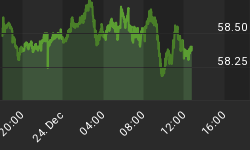For the fourth consecutive month, housing stats provided a wild ride. For December, starts rose 11.3%, but that was thanks to a 57% jump in multi-family.
Mortgage News Daily reports Construction Starts Bounce Back, Permits Remain Constrained.
Housing starts continued their see-saw pattern in December, rising 11.3 percent from November when they had fallen significantly after a sensational October. The increase this time, however, was due solely to a surge in multi-family construction. Meanwhile, housing permits turned in another lackluster performance.
The U.S. Census Bureau and the Department of Housing and Urban Development reported that residential housing starts were at a seasonally adjusted annual rate of 1,226,000 in December, up from a revised rate of 1,102,000 in November. The November estimate was originally reported at a rate of 1,090,000. The December estimate put housing starts up 5.7 percent from the level in December 2015.
Single-family housing starts were at a rate of 795,000, a decline of 4.0 percent from the November figure of 828,000 and 3.9 percent higher than a year earlier. There was an increase of 53.9 percent in unit starts in buildings with five or more units, to an annual rate of 417,000 compared to 271,000 in November. Multi-family starts are running 10.3 percent ahead of the December 2015 level.
Starts vs. Permits

Although it takes a permit to do a start, potential long delays between the two makes speculation over permits risky.
I discount permits in favor of starts as the latter takes a commitment from an owner while the former reflects builder optimism.
Single Family Starts

The above chart puts a much-needed perspective on mainstream media and realtor cheerleading.
Single-family housing starts are at or below levels seen in eight of the last eight recessions. Starts barely moved during the 2001 tech-led led recession.
Curiously, at no point in the 1960 recession were starts as low as they are today.
What's Going On?
Demographics, affordability, and attitudes of millennials all come into play.
- Retiring boomers downsize
- Home prices are not affordable
- Millennials have far different attitudes towards debt, housing, family formation, and mobility than their aging parents
Point number 3 is the key driving force.
















